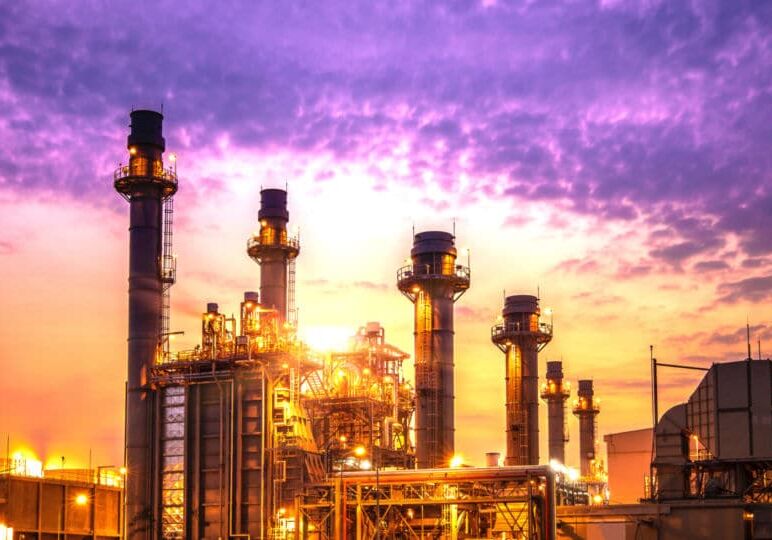Smart petrochemicals: A smart business move

Petrochemicals leaders are getting smart about Smart technologies. A sector previously “lagging behind” when it came to digital progress, now digitalisation and automation are saving petrochemicals operators up to 20% in downtime.
Every minute counts, and costs, and this increased efficiency could mean greater profit. Asian Downstream Insights delves into the digitizing world of petrochemicals, how early innovators pushed automation up the petrochemical agenda, and why buy-in for technologies is a sound future investment.
From slow starts to stepping up
Increasingly, petrochemicals operators are turning to AI and ML technologies to expedite operations, and use data to make quicker, and more accurate, decisions. When partnered with predictive and descriptive analytics, these technologies can also predict and suggest potential outcomes based on real-time and historical data, aiding decision makers to optimize performance.
But digitalisation has not always been top of the petrochemical agenda. In 2017, a report by Deloitte, boldly titled “Digital transformation: Are chemical enterprises ready?”, announced that 50% of chemicals enterprises lacked clear strategy and a transformation roadmap. Just one year later, a European Petrochemicals report stated that 75% of petrochemicals companies described themselves as “lagging behind” when it came to supply chain digitalisation. Their customers’ view was even more damning, placing the figure at 95%. A lack of investment for large-scale new capital projects, and an under-prepared workforce contributed to low confidence in digital adoption and lack of data visibility. As a refining executive revealed, “The data is there. We just can’t see it”.
Since then, the development of more sophisticated technologies, and a set of select trailblazers, has spurred the sector on. Dow, Evonik and others have been early recognisers of the value new technologies can add the petrochemicals’ business growth. Dow CEO, Jim Fitterling remarked recently that the world of chemical manufacturing feels “more digital…more automated and much more modern than what I remember 35 years ago joining Dow”. In Singapore alone, Evonik has used digitalisation and automation across their aromatics plants to reduce downtime by up to 10 – 20%. In 2017. BASF, the world’s largest chemical producer announced a partnership with technology giant Hewlett Packard, to produce the world’s largest supercomputer. And just last year, PT Chandra Asri announced a pioneering partnership with Siemens and Bentley Systems to launch the Indonesian company’s first petrochemical digital twin. According to PT Chandra Asri’s President, Erwin Ciputra, this automated visualization is in line with the organisation’s – and Thailand’s – wider Industry 4.0 vision, and a further step in positioning the country as a next generation digital leader on the global landscape.
New technologies spurring new growth
It isn’t just an increase in awareness. Technology solutions are becoming increasingly more sophisticated. Following the drop in oil prices, and the dip in transport fuel demand of 2020, many oil and gas operators are turning their focus, and adapting their business models, to the growing petrochemicals market, which are set to account for a third of global oil demand growth to 2030 and nearly half through 2050. Integrating new petrochemicals plants into existing oil and gas refinery infrastructure, or reconfiguring their existing plants towards producing more petrochemicals products, has brought the petrochemicals market to a new scale, and increased the need and recognition for the resources, budget and technologies to keep up. Traditional refineries are investing in new equipment and processes as petrochemicals’ presence continues to grow.
Cost of technologies is one major challenge in implementing digitalization into the petrochemical business model. Operators should be able to fully understand how new technologies can help add value, and reduce costs. AI algorithms can help predict and avoid future disruptions, or equipment maintenance costs, and cut down on the estimated $20bn lost annually across the petrochemicals sector due to unplanned downtime, innovation is now a need-to-have for operators to maximise their profitability and their potential and save on manual resources. And as one Innovation Leader told ADI, it is only through ingraining digitalisation into all levels of organization culture that it can graduate from a back office service to business enabler, with the budget and buy-in to match.
Destination Digitalisation
There is still progress to be made for petrochemicals on their digitalisation journey. As the industry predicts further economic uncertainty ahead, the majority of petrochemical operators agree that the market is likely to become even more competitive in the years ahead. Commercial success, will be driven by the agility to introduce digitalisation, and the adaptability to embrace it. Smart technologies will be the drivers of petrochemical progress. But savvy workforces will be the drivers of profit.
Read more:
- ADNOC Signs Heads of Agreement with IndianOil for Ruwais LNG Project
- SABIC Opens Multi- Million-dollar ULTEM™ Resin Manufacturing Facility in Singapore to Meet Growing Demand in Asia-Pacific
- Predictive Analytics and IoT for Pumps
- Asian Downstream Summit, Asian Refining Technology Conference, Ammonia and Carbon Capture Asia 2024 Highlights Sustainable Solutions and Celebrates Key Individuals and Organisations
- Interview with Debjit Chandra, Global Technical Service Manager for Dorf Ketal